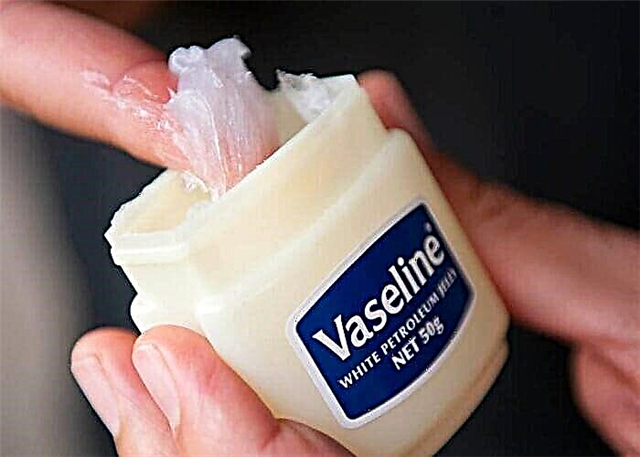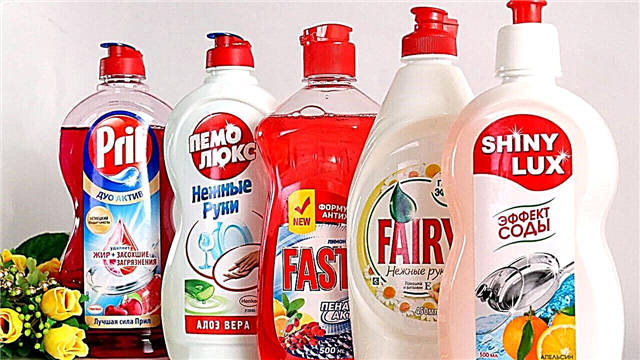For many household items that fill store shelves, you should thank the marketers and testers who changed the original idea of the product. Introducing you top 5 things that are not used as intended.
5. Vaseline
 A oily liquid is usually applied to the skin and lips to soften and moisturize them. But the creator of Vaseline had a slightly different concept. He wanted people to eat Vaseline.
A oily liquid is usually applied to the skin and lips to soften and moisturize them. But the creator of Vaseline had a slightly different concept. He wanted people to eat Vaseline.
This product appeared when American oil workers cleaned a strange, sticky sediment from the Boers and decided “what if this substance can be rubbed into the skin with burns and cuts?” Chemist Robert Chesbro, talking with oil workers, saw what they do with petroleum jelly and how this remedy successfully works on abrasions, scars and burns. Soon he began to travel around New York, burning his skin with acid and rubbing the wound with "oil jelly" in front of an admiring crowd.
Chezbro did not stop there. He insisted that eating a spoonful of petroleum jelly every day is good for health and vitality. Modern science suggests that taking vaseline inside will not end in anything good. In fairness, we add that Chezbro lived to be 96.
4. Corn flakes
 According to statistics, the main consumers of corn flakes these days are preschool children. But at first this product was intended for “lustful” adults.
According to statistics, the main consumers of corn flakes these days are preschool children. But at first this product was intended for “lustful” adults.
John and Will Kellogg, the creators of corn flakes, owned a sanatorium where they came to improve celebrity health. The brothers were strict Seventh-day Adventists, and they had very unusual ideas on how to cleanse not only the body, but also the soul of the clients.
Dr. John believed that sex was an unclean and harmful occupation, including sex between husband and wife. John and his wife slept in separate bedrooms to resist the temptation. And the most terrible sin for John was masturbation. He specifically designed cornflakes as the least sexiest food without sugar and spices. After all, these products, according to Kellogg, inflamed people's lust. He fed cereal to his patients, believing that their mild taste could suppress his sex drive.
John then tried to sell cornflakes as a children's breakfast, hoping that a generation of children around the world would get tired of sex. It is unlikely that anyone would buy this "chaste" food, if not for Will Kellogg, who added sugar to corn flakes. This infuriated John so much that he sued his brother.
3. Bubble wrap
 In fifth place in the ranking is everyone's favorite bladder bubble film (chpoker), invented by Alfred Fielding and Mark Shawan in 1957. Initially, it was not conceived as a package for parcels. The film was supposed to be upscale soft wallpaper.
In fifth place in the ranking is everyone's favorite bladder bubble film (chpoker), invented by Alfred Fielding and Mark Shawan in 1957. Initially, it was not conceived as a package for parcels. The film was supposed to be upscale soft wallpaper.
But the Americans did not want the walls of their houses to be covered with bubble wrap, so Fielding and Shawan tried to sell their invention as a greenhouse insulation material. This continued until the 1960s, until the bubble wrap found its true purpose in packing boxes.
2. Soft drinks
 There is a good chance that the drinks you give your children were never intended for them. As it turned out, many popular drinks began as popular alcoholic cocktails.
There is a good chance that the drinks you give your children were never intended for them. As it turned out, many popular drinks began as popular alcoholic cocktails.
Mountain Dew, for example, was originally intended to be used with whiskey. Sprite was sold as an additional component for tart whiskey.
But the popular Coca-Cola drink was a drug developed by John Pemberton, a pharmacist and officer who was wounded during the American Civil War. Pemberton's wound caused pain and, as a result, a strong craving for morphine, with which he constantly struggled. Pemberton once heard of a new medicine that people use to rid themselves of opiates: a mixture of wine and cocaine.
Pemberton tried to make his own wine with cocaine. When an assistant in the laboratory accidentally added sparkling water to the mixture, he tried it and found that he was holding a "gold mine" in his hands. Pemberton sold his invention as a panacea for almost all ailments, including "the most remarkable stimulant of sexual arousal."
1. Tampons
 In the first position of our list of the most interesting things that are used for other purposes, are the "little friends of women." They received a mass of both laudatory and negative reviews, in particular, due to toxic shock syndrome. However, women were not always the only ones who used tampons. These hygiene products are closely related to military service. In the 18th century, books on medicine contained recommendations to always keep swabs with you to plug in bullet wounds.
In the first position of our list of the most interesting things that are used for other purposes, are the "little friends of women." They received a mass of both laudatory and negative reviews, in particular, due to toxic shock syndrome. However, women were not always the only ones who used tampons. These hygiene products are closely related to military service. In the 18th century, books on medicine contained recommendations to always keep swabs with you to plug in bullet wounds.
During World War II, Tampax produced military dressings for the army. These were mainly bandages, but the famous product of the company found its application in men. There are records of soldiers who used Tampax tampons to stop bleeding from a wound.












